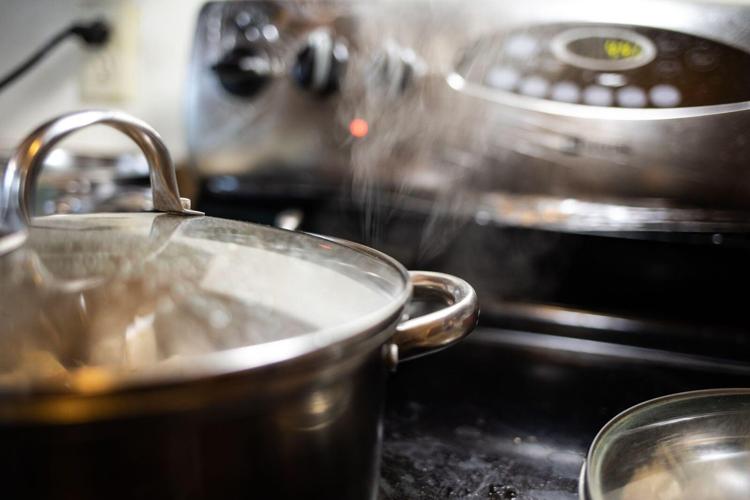Making Water Safe
When you're in a survival situation, among the most significant problems that you'll need to solve instantly is getting a supply of clean water that's safe to drink. If you do not cope with this task, you could be dead in just a couple of days or even sooner. It pays to be prepared, and also exploring a few different methods for purifying water is the knowledge that has the potential to save your health and life.
The best ways to purify water:
Boiling water for purification
Boiling is a reliable approach that’s been used for years to remove harmful germs from the water. You just need to have a container to hold the water and also a resource of heat. Commonly, a fire will be your heat resource, but in case you are able to use an oven or even a camp cookstove at the time, it will be even much easier. This can be a good way to purify water in a pinch, however, it’s time-consuming to wait for the water to boil and then cool down. In case of emergency, this could be a lifesaver since boiling is sufficient to kill pathogenic bacteria, viruses, and protozoa in the water you collect in the wilderness. If you need distilled water in your home you can check for distilled water machine for home and you can find various options online. These machines work by heating the water into steam, which is then condensed back into liquid form, leaving behind any contaminants that were present in the source of water.

Filtration Processes
A good way to ensure you're drinking clean water is by filtering it. Filtration allows water to pass through the filter, leaving behind any solids. This method uses chemical and physical processes to deliver safe drinking water. This method eliminates both large compounds and small, dangerous contaminants that cause diseases with a simple and quick filtration process. The proper filtration removes contaminants like toxins and microbes, as well as the chlorine and fluoride additives from the treatment plant.
It's a great idea to maintain a small water filter around just in case of an ife-or-death situation. There is a range of affordable water filter systems solutions, effectively removing chlorine, bacteria, dirt, rust, sediments, and more. Plus, a water filter is a quick and easy way to remove these residual chemicals and to leave your resulting water supply with a beautifully fresh, clean, and pure taste — as it is meant to!
Water distillation
is a process in which water is boiled until it evaporates and condenses, leaving behind impurities with different boiling points. Distillation produces clean, pure water. It is an effective water treatment method for removing contaminants like bacteria, heavy metals, and chemicals.
Distilled water is safe to drink. But you’ll probably find it flat or bland. That’s because it’s stripped of important minerals like calcium, sodium, and magnesium that give tap water its familiar flavor. What’s left is just hydrogen and oxygen and nothing else.

Disinfection with iodine or chlorine
We could be shockingly unprepared for an extreme situation, which means we need to use what’s available to try to come up with a solution. Fortunately, some very typical household chemicals can be used as the best water purifiers. They might not make the best tasting water, but on the other hand, it will be OK to drink and won’t make you sick.
Bleach is one of the typical chemicals you are able use to purify water. Only use regular, unscented chlorine bleach products that are suitable for disinfection and sanitization as indicated on the label. The label might say that the active ingredient contains 6 or 8.25% of sodium hypochlorite. Do not use scented, color safe, or bleaches with added cleaners. In case water is cloudy, let it settle and filter it through a clean cloth, paper towel, or coffee filter.
Volume of Water | Amount of 6% Bleach to Add* | Amount of 8.25% Bleach to Add* |
1 quart/liter | 2 drops | 2 drops |
1 gallon | 8 drops | 6 drops |
2 gallons | 16 drops (1/4 tsp) | 12 drops (1/8 teaspoon) |
4 gallons | 1/3 teaspoon | 1/4 teaspoon |
8 gallons | 2/3 teaspoon | 1/2 teaspoon |
*Bleach may contain 6 or 8.25% sodium hypochlorite.
Iodine is another common chemical found in most people’s medicine cabinets that can be used to purify water. Be aware that some people are allergic to iodine and cannot use it as a form of water purification. Persons with thyroid problems or on lithium, women over fifty, and pregnant women should consult their physician prior to using iodine for purification. Also, note that some people who are allergic to shellfish are also allergic to iodine.
The Bottom Line
Water is obviously essential for hydration and for food production — but sanitation is equally important. The purification procedure reduces the concentration of contaminants such as suspended particles, parasites, bacteria, algae, viruses, and fungi.
Whether you pick a water filter, typical home chemicals, or the tried and real approach of boiling, these methods of purifying water can maintain your life when water is scarce and you need to prevent dehydration. Water is the foundation of our lives.



(0) comments
We welcome your comments
Log In
Post a comment as Guest
Keep it Clean. Please avoid obscene, vulgar, lewd, racist or sexually-oriented language.
PLEASE TURN OFF YOUR CAPS LOCK.
Don't Threaten. Threats of harming another person will not be tolerated.
Be Truthful. Don't knowingly lie about anyone or anything.
Be Nice. No racism, sexism or any sort of -ism that is degrading to another person.
Be Proactive. Use the 'Report' link on each comment to let us know of abusive posts.
Share with Us. We'd love to hear eyewitness accounts, the history behind an article.